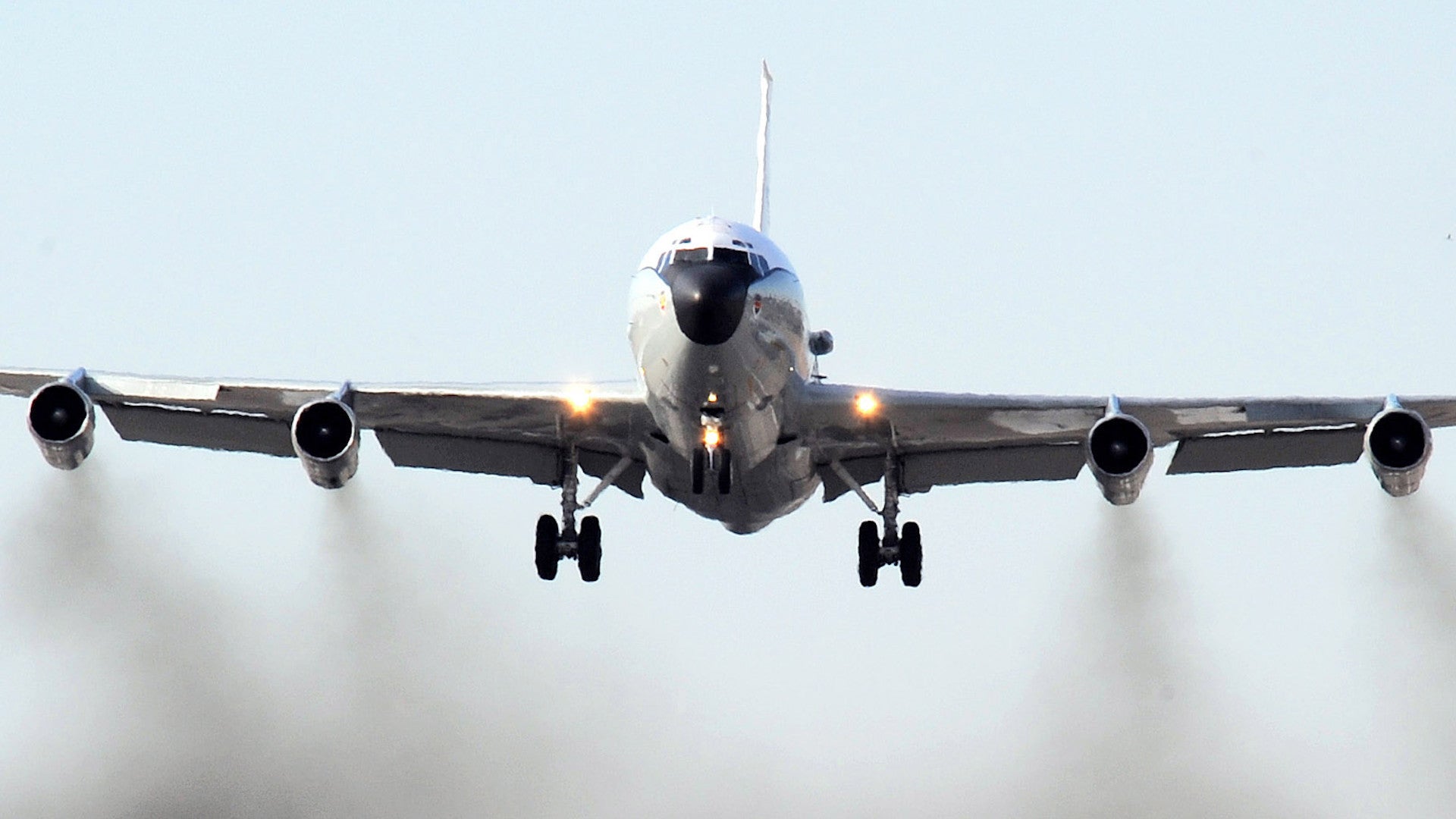The U.S. Air Force’s lone WC-135W Constant Phoenix “nuke sniffer” aircraft flew an unusual mission over the Baltic Sea today. This plane is typically used to collect air samples to monitor for spikes in radiation levels in the atmosphere, but can also be employed after nuclear weapon tests and atomic accidents to help glean more information about those events and track the potential spread of dangerous radioactive material.
The WC-135W, which has the serial number 61-2667, carried out the flight, using the callsign Jake 21, from RAF Mildenhall in the United Kingdom, according to flight tracking data from ADS-B Exchange. Constant Phoenix aircraft have regularly used Mildenhall, which also routinely supports operations involving the Air Force’s family of RC-135 intelligence, surveillance, and reconnaissance (ISR) aircraft, as a staging point for missions in Europe for years.
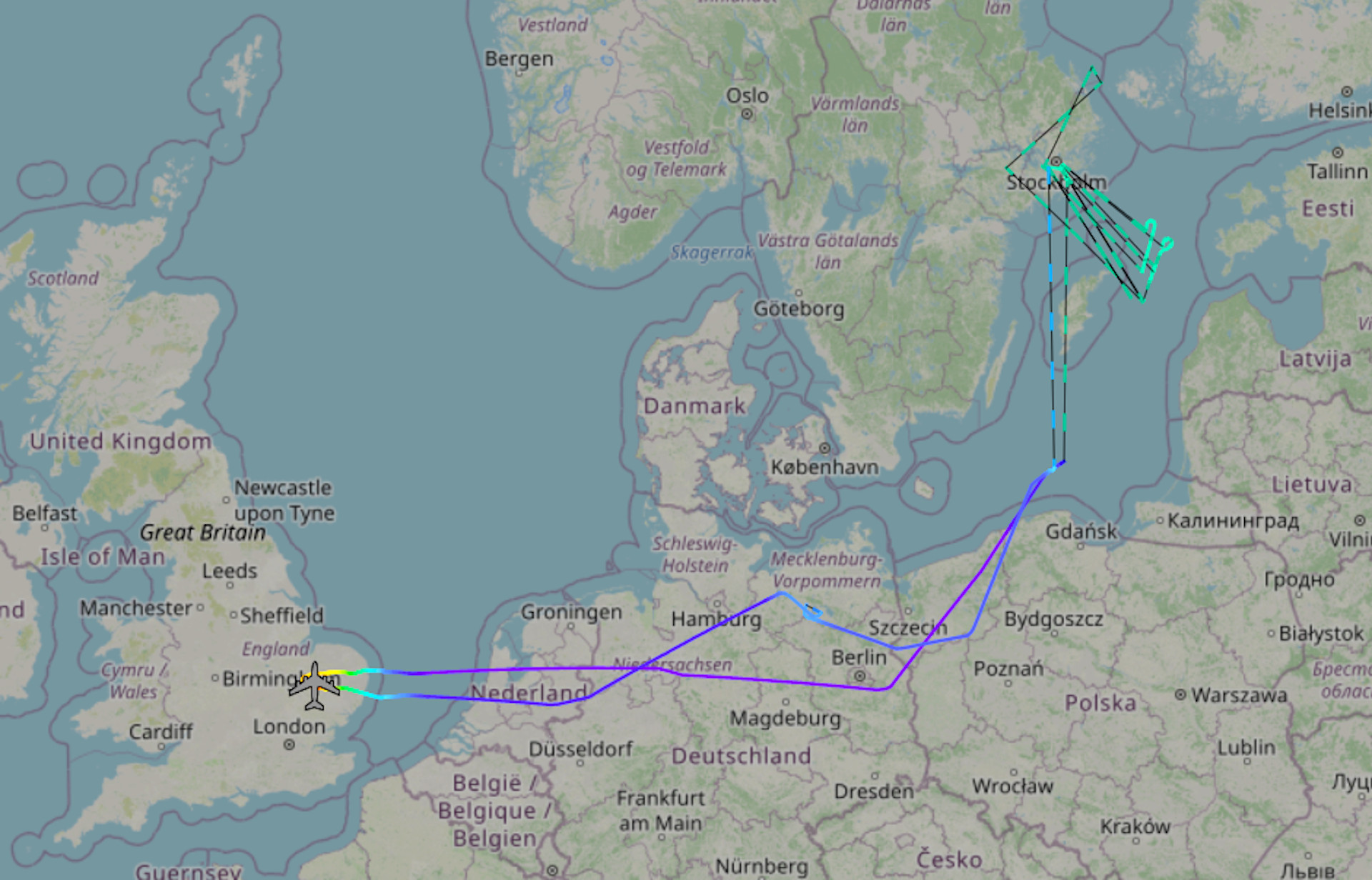
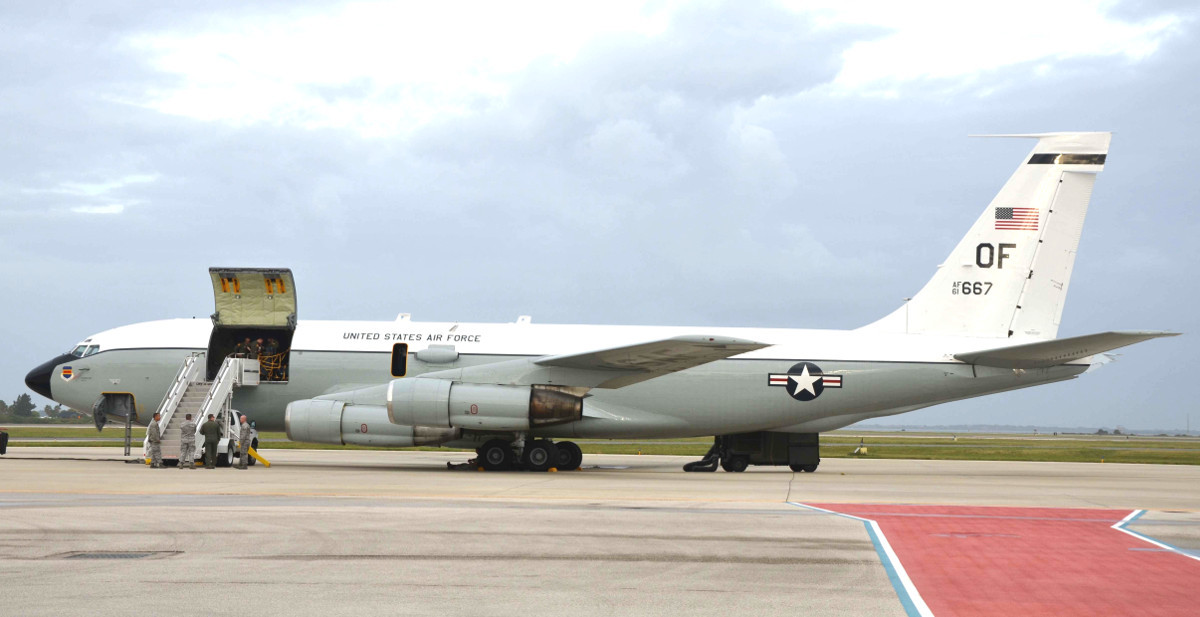
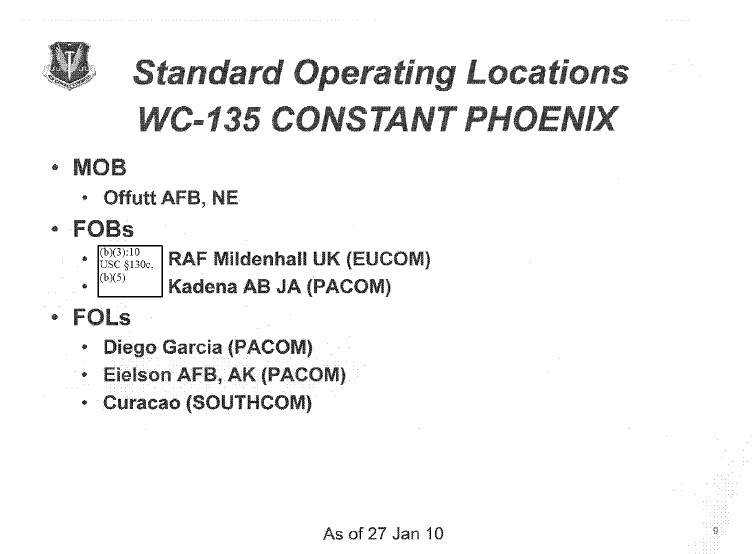
The aircraft flew east over The Netherlands, Germany, and then Poland, before turning north into the Baltic Sea. Once there, it then flew a pattern over the water, before returning the way it had come. Online flight tracking data indicates that the plane flew for at least a time over the Baltic Sea at relatively low altitudes between 5,000 and 6,000 feet. The jet cruised at between 20,000 and 30,000 feet on its way to and from the area.
ADS-B Exchange’s data also shows that 61-2667 had left its home base at Offutt Air Force Base in Nebraska on July 28 and arrived at Mildenhall on July 31. The aircraft does not appear to have flown any other sorties before the one today since touching down in the United Kingdom.
It’s unclear what the purpose of this Constant Phoenix sortie over the Baltic Sea today was. The War Zone has reached out to 16th Air Force, which includes the Air Force Technical Applications Center (AFTAC), for more information. Personnel from AFTAC, a highly secretive organization, are the ones that actually operate the sensor systems on the WC-135W. The center’s primary mission is to help ensure that parties to the 1963 Partial Nuclear Test Ban Treaty are still abstaining from above-ground nuclear testing, though, as already noted, it monitors for various other kinds of nuclear events, as well.
Observers on social media were quick to point out recent activity in the region involving two nuclear-powered Russian vessels that might have been related to this flight, but this seems unlikely in both cases.
The sortie does come nearly a week after the Russian Navy’s Oscar-II class nuclear guided-missile submarine Orel
broke down while transiting out of the Baltic Sea into the North Sea via Denmark’s Great Belt strait. “It is always worrying when a vessel of this type has problems with propulsion,” Major Elisabeth Eikeland, a spokesperson for the Norweigan Armed Forces’ Joint Headquarters, told The Barents Observer after the incident.
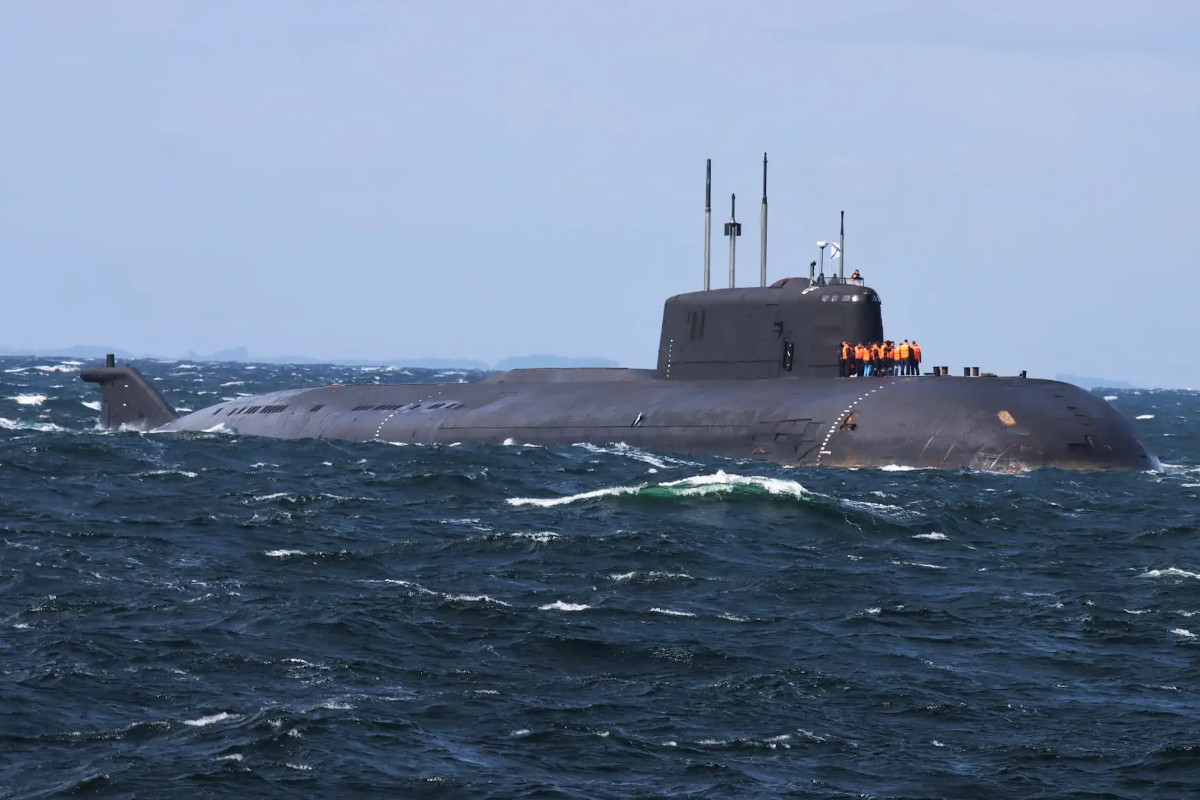
Still, while the Russian Navy, like the Soviet Navy before it, is also no stranger to serious accidents involving nuclear-powered submarines, there is no indication one way or another that an issue with Orel‘s reactor was in any way a factor or that there was any release of radiation, and the submarine was ultimately able to continue on its way under its own power after the still-unexplained loss of propulsion. It is also worth pointing out that, while 61-2667 had arrived in the United Kingdom the day after the boat’s break down, the aircraft had already been headed to Mildenhall days before that occurred. The aircraft’s route also took it over the Baltic Sea well to the northeast of the Great Belt.
Sevmorput, one of just four nuclear-powered cargo ships ever built and the only one still in service, has also been observed on online ship tracking software sailing in the Gulf of Finland recently. In November 2020, Vyacheslav Ruksha, head of the Northern Sea Route Directorate at Russia’s state nuclear company Rosatom, disclosed that the ship was headed for dry dock in St. Petersburg after one of its four propellers broke for unknown reasons while it was sailing off the coast of Angola earlier in the year.
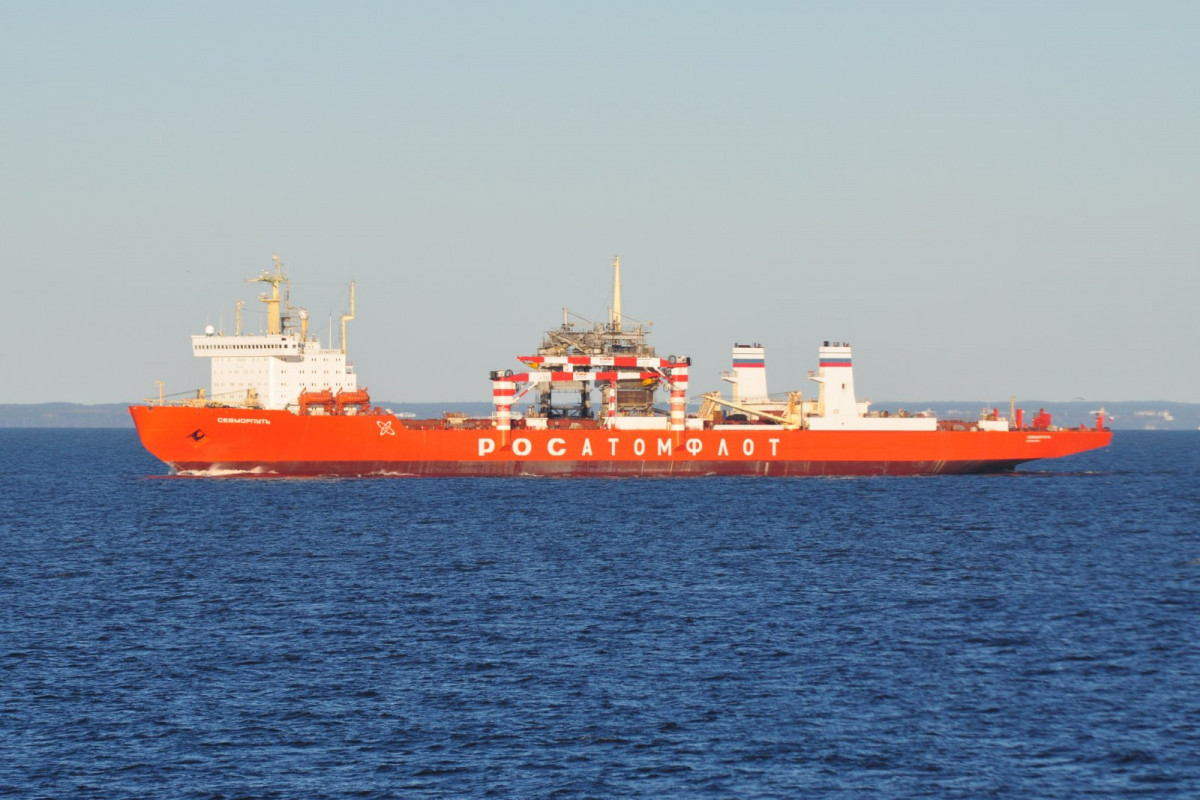
It’s unclear what the current status of Sevmorput is and it is possible that the ship’s current activities could be sea trials following the propeller repairs, but, again, there have been no reports of any issues with this vessel’s nuclear plant as a result of the damage it suffered last year. 61-2667’s flight also did not take it into the Gulf of Finland and the aircraft appears to have remained south of that body of water for the duration of its flight.
Depending on the prevailing weather patterns, a flight over the Baltic Sea could have been intended to snoop for radioactive particles emanating from further to the north and east. Russia notably conducted at least some testing of its controversial nuclear-powered and nuclear-armed cruise missile, dubbed Burevestnik, at Nyonoksa on the White Sea to the northeast. A major radiological accident in the area in 2019 was all but certainly related to this work and may well have prompted a decision to move further testing to the Novaya Zemlya, an archipelago in the Arctic.
This general region of Russia is also home to a number of naval bases hosting nuclear submarines, civilian nuclear powerplants, and nuclear waste disposal sites. Spikes in radiation have been recorded in the region in the past, including one just last summer, which have prompted concerns about potential accidents at power generation and waste facilities.

Beyond all this, Constant Phoenix aircraft have been regularly deployed around the world over the years for routine collection sorties intended to confirm there have been no significant changes to ambient levels of radiation as part of AFTAC’s Partial Nuclear Test Ban Treaty monitoring mission. AFTAC insisted that this was the purpose of a Constant Phoenix flight over the Arctic in 2017, despite that flight taking place amid reports of elevated levels of radioactive iodine-131 in the atmosphere that appeared to be coming from Russia’s northwestern Kola Peninsula. Iodine-131 is a byproduct of certain nuclear fission reactions and a spike in concentrations could have pointed to a nuclear test or accident of some kind.
Routine, or not, 61-2667’s flight also underscores the limited capacity the Air Force has to carry out “nuke sniffing” missions of any kind at present. As already mentioned, the Air Force only has one WC-135 of any type still in service, having retired its only other operational Constant Phoenix jet, a WC-135C with the serial number 62-3582, last year.

Both of these aircraft were originally built in the 1960s in other configurations before being converted into Constant Phoenixes and have been increasingly difficult to operate and maintain for years now. Major Problems with 62-3582 had become so commonplace by the time of its retirement that crews had nicknamed it “Lucifer’s Chariot.” 61-2667 was left stranded for two months at RAAF Amberley in Australia due to mechanical problems earlier this year.
The Air Force is planning to turn three KC-135R aerial refueling tankers into WC-135Rs to provide additional capacity for the Constant Phoenix mission, but it’s unclear when the first of those aircraft might start flying in their new configuration. The service only moved to start converting the aircraft last year. The Air Force has also been working on podded systems that could enable other aircraft, including unmanned platforms, to carry out at least some of these missions.
Still, 61-2667’s sortie over the Baltic Sea today was certainly intriguing and The War Zone will be sure to update this story with any new information we may receive about this flight.
Contact the author: joe@thedrive.com
